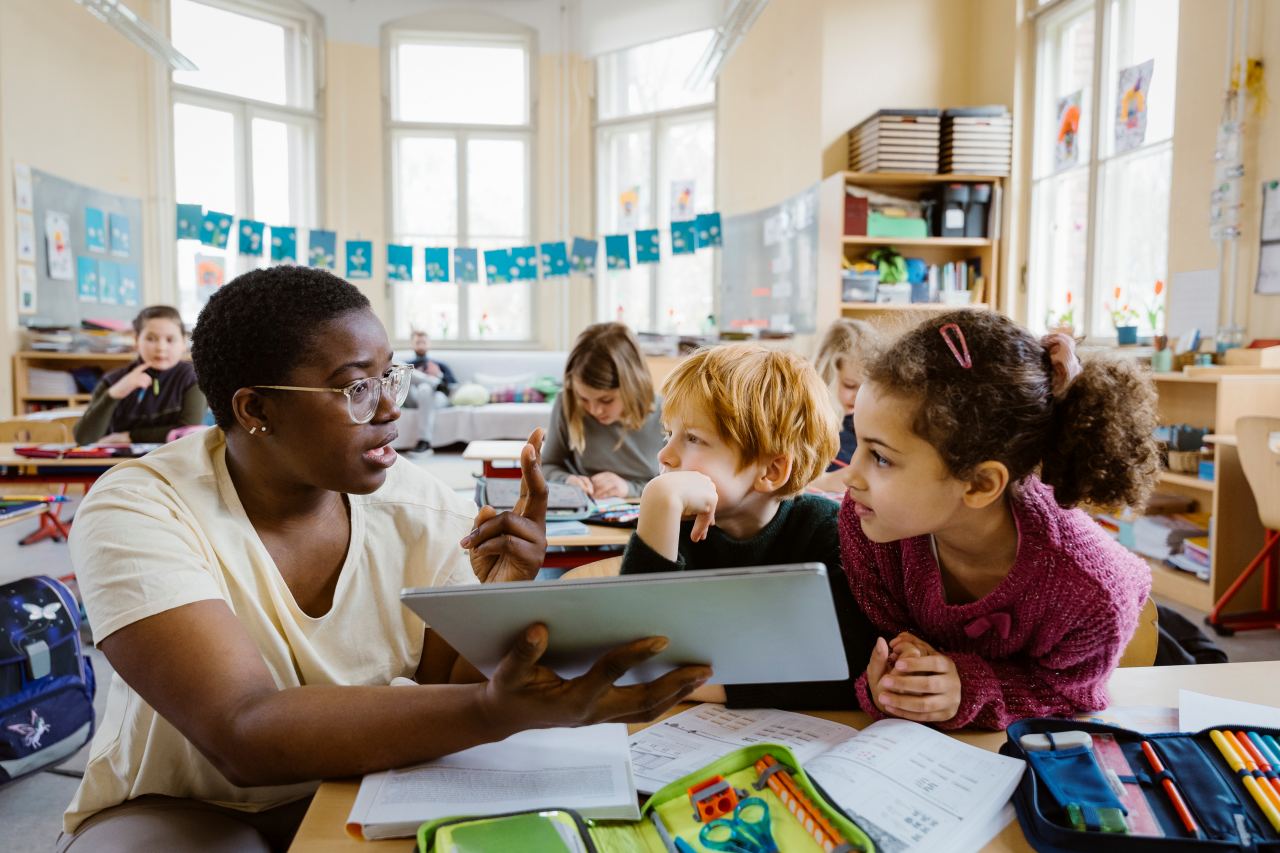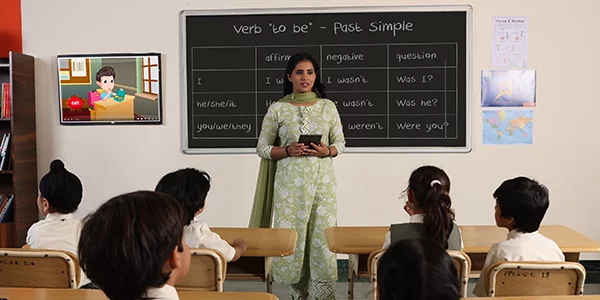Expert Tutors Offering Primary Science Tuition Singapore for All Grades
Expert Tutors Offering Primary Science Tuition Singapore for All Grades
Blog Article
A Comprehensive Guide to the Numerous Discovering Techniques in Key Science Instruction
The exploration of varied understanding techniques in main scientific research guideline provides an opportunity for educators to enhance trainee involvement and understanding significantly. By examining hands-on knowing methods, inquiry-based strategies, and collaborative strategies, we can identify effective techniques that cater to various discovering designs. Furthermore, the assimilation of technology and set apart direction plays a vital role in promoting an inclusive atmosphere. Nonetheless, the concern remains: how can these methods be successfully carried out in the classroom to optimize their influence? The solution hinges on a closer examination of each strategy and its implications for mentor scientific research.

Hands-On Learning Methods
Hands-on understanding techniques play an essential duty in main science guideline, involving pupils in active expedition and experimentation. These methods allow learners to communicate straight with phenomena and products, fostering a deeper understanding of scientific concepts. By utilizing manipulatives, designs, and real-life experiments, educators produce a setting where students can observe, assume, and test their concepts.
Such techniques not only enhance understanding yet likewise grow vital thinking and analytic abilities. When trainees take part in activities like constructing easy machines, planting seeds, or performing chemical responses, they are urged to ask concerns and seek answers via their own monitorings. This experiential method helps to demystify complicated clinical concepts, making them more accessible and relatable.
Furthermore, hands-on discovering promotes collaboration amongst peers, as trainees typically operate in teams to conduct experiments or share searchings for. This teamwork not just enriches their understanding experience yet likewise develops important social skills. Ultimately, integrating hands-on methods in primary scientific research instruction fosters a long-lasting love of discovering and curiosity about the environment, laying a solid structure for future scholastic quests in science and beyond.
Inquiry-Based Knowing
Inquiry-based learning is an instructional technique that motivates trainees to ask concerns, investigate phenomena, and create their very own understanding of scientific concepts. This technique changes the focus from typical teacher-led guideline to a much more student-centered experience, where students take the effort in their educational journey. By cultivating inquisitiveness, inquiry-based knowing promotes deeper involvement with the material, permitting pupils to check out subjects in a meaningful context.
In practice, this approach often involves hands-on experiments, observations, and crucial thinking tasks that straighten carefully with the clinical technique. Trainees are encouraged to formulate hypotheses, design investigations, and examine information, which cultivates vital abilities such as analytical and logical thinking. The function of the teacher in this structure is to promote exploration, leading students through the inquiry process while motivating independent idea and partnership.
Furthermore, inquiry-based knowing supports a feeling of possession over the learning procedure, encouraging pupils to go after understanding actively. This method not just enhances understanding of clinical concepts yet likewise fosters a long-lasting love for discovering, gearing up trainees with the skills needed to browse a significantly complicated globe.
Collaborative Understanding Approaches
Collective learning techniques encourage students to take part in purposeful interactions with peers, fostering a common duty for their educational results. In main scientific research instruction, these techniques motivate students to collaborate to check out clinical principles, resolve issues, and perform experiments (primary science tuition Singapore). By participating in group activities, trainees can utilize varied perspectives, enabling for richer understanding and retention of clinical expertise
One trick aspect of joint discovering is the focus on communication skills. Trainees need to express their ideas, pay attention proactively to others, and discuss concepts, all of which are essential expertises in both real-world and academic contexts. This social communication not just boosts their understanding of clinical concepts yet additionally advertises team effort and problem resolution skills.
When students see the worth of their payments within a group, they are more most likely to take ownership of their knowing trip. Generally, incorporating collective learning approaches in main science instruction cultivates a dynamic discovering atmosphere that prepares trainees for future academic and social difficulties.
Technology Combination in Science
The integration of innovation in key scientific research instruction improves finding out experiences by giving innovative devices and sources that sustain various mentor methodologies, including collective knowing - primary science tuition Singapore. Using electronic systems, simulations, and interactive applications allows pupils to engage deeply with clinical principles, facilitating a more hands-on method to discovering
Online research laboratories, for example, enable learners to carry out experiments safely and efficiently, advertising inquiry-based learning. These devices can replicate real-world scientific circumstances, permitting trainees to imagine complicated processes that would certainly be hard to duplicate in a standard classroom setup. Furthermore, technology fosters interaction and cooperation amongst students, as they can share findings and interact on jobs through online platforms.
Furthermore, multimedia presentations and academic video clips can improve lessons by accommodating diverse knowing styles, making abstract concepts much more accessible. Information analysis tools additionally empower students to collect and interpret scientific information, enhancing essential thinking abilities. Overall, the tactical incorporation of innovation in main scientific research guideline not only improves engagement but likewise prepares trainees for a highly sophisticated society, outfitting them with vital abilities for future scientific ventures.
Set Apart Guideline Methods
Differentiated guideline methods are essential for addressing the varied demands of students in key science education and learning. These methods allow instructors to tailor their teaching techniques to suit differing abilities, rate of interests, and finding out styles within the class. By utilizing differentiated guideline, teachers can create an inclusive environment that promotes engagement and her response boosts understanding of clinical ideas.
One efficient approach is to use versatile grouping, which permits trainees to work visit this page together with peers at similar skill degrees or with varying point of views. This method urges peer understanding and promotes vital reasoning. Additionally, providing choices in jobs can equip students, permitting them to pick tasks that resonate with their rate of interests while still satisfying curricular goals.
In addition, including tiered assignments is an additional important strategy. Deliberately tasks with differing degrees of intricacy, instructors can make sure that all pupils are appropriately challenged, no matter their effectiveness. Making use of formative analyses to assess understanding additional makes it possible for teachers to readjust their educational techniques dynamically, ensuring that each student gets the assistance they need.
Ultimately, executing differentiated guideline techniques in key scientific research education not just enhances trainee discovering end results yet likewise cultivates an interest for science, preparing trainees for future academic pursuits.

Verdict
In recap, effective main science direction requires a complex approach that encompasses hands-on learning, inquiry-based approaches, and joint techniques. The integration of technology and separated guideline further accommodates diverse learning styles, cultivating a setting for exploration and vital thinking. By executing these approaches, instructors can improve trainee engagement and understanding, eventually nurturing a lifelong enthusiasm for scientific research and inquiry. Such thorough techniques are vital for establishing informed and interested future researchers.
The expedition of diverse learning techniques in main scientific research instruction presents an opportunity for teachers to boost trainee involvement and top article comprehension substantially.Hands-on discovering methods play an essential function in key scientific research guideline, involving trainees in energetic expedition and trial and error.Inquiry-based understanding is an instructional strategy that urges trainees to ask questions, investigate phenomena, and build their own understanding of clinical concepts.Joint knowing approaches empower trainees to engage in meaningful communications with peers, cultivating a common duty for their academic outcomes. On the whole, integrating joint knowing strategies in key scientific research instruction cultivates a vibrant learning setting that prepares pupils for future academic and social obstacles.
Report this page